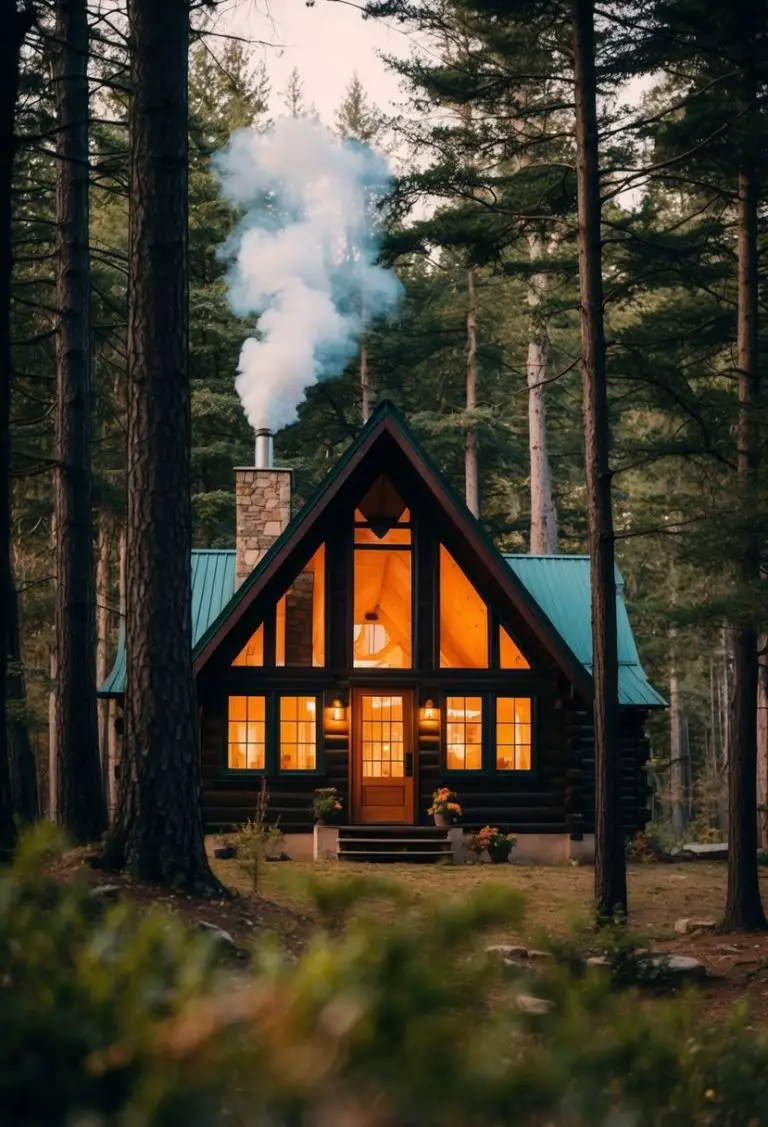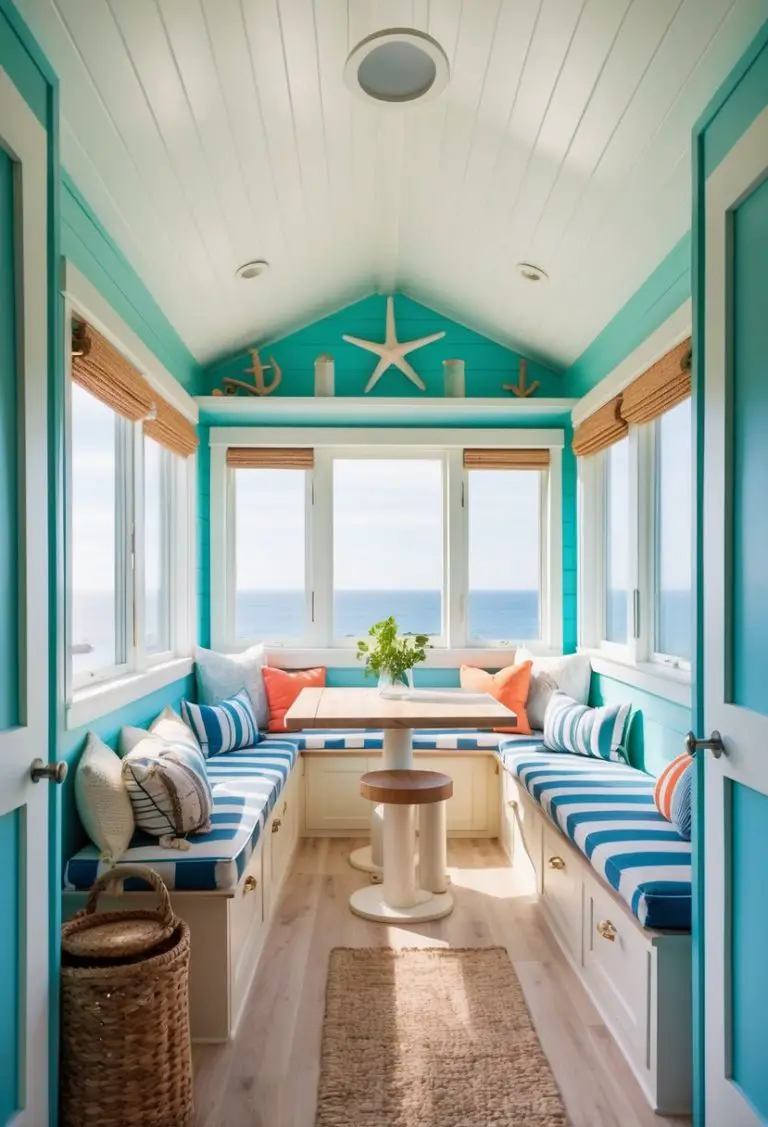Where Can You Put a Tiny House: A Comprehensive Guide
Tiny houses have become increasingly popular in recent years as a way to live sustainably and affordably. However, finding a place to park or build a tiny house can be a challenge. There are zoning laws, building codes, and other regulations to consider, and not all areas are friendly to the tiny house movement.
One option for parking a tiny house is in an RV park. Many RV parks allow tiny houses on wheels, which are classified as recreational vehicles. However, it’s important to check local zoning laws to ensure that a tiny house is allowed in the area. Another option is to build a tiny house on a piece of land that’s zoned for residential use. However, building codes and other regulations may apply, so it’s important to do research before starting construction.
In some areas, accessory dwelling units (ADUs) are allowed. These are small, separate living spaces that are built on the same property as a larger home. ADUs can be a great option for those who want to live in a tiny house but don’t want to deal with the challenges of finding a place to park it. However, again, it’s important to check local zoning laws to ensure that an ADU is allowed in the area.
Understanding Zoning and Legal Requirements
When it comes to putting a tiny house on a piece of land, there are a few legal and zoning requirements to keep in mind. Understanding these requirements is crucial to ensure that you comply with local regulations and avoid any legal issues.
Navigating Building Codes and Zoning Laws
Tiny houses are subject to the same building codes and zoning laws as traditional homes. This means that you will need to comply with local ordinances and regulations when building or placing your tiny house. It is important to research the specific zoning laws and building codes in your area before you begin construction.
Zoning laws dictate where you can place your tiny house and what type of foundation it must have. Some areas allow tiny houses to be placed on wheels, while others require a permanent foundation. Building codes dictate the safety standards that your tiny house must meet, including requirements for emergency exits, separate bathrooms, and plumbing.
Securing Permits and Complying with Regulations
In addition to complying with zoning laws and building codes, you will also need to secure the necessary permits before placing your tiny house on a piece of land. This may include a building permit, which is required for any new construction, as well as permits for plumbing and electrical work.
To secure permits and comply with regulations, you will need to work closely with your local zoning department, building department, and planning department. These departments can provide guidance on the specific requirements in your area and help you navigate the permitting process.
It is also important to ensure that your tiny house meets all safety standards and building regulations. This includes having proper windows, emergency exits, and smoke detectors. By complying with all regulations and securing the necessary permits, you can ensure that your tiny house is safe and legal.
Choosing the Right Location for Your Tiny House
When it comes to owning a tiny house, choosing the right location is crucial. The right location can have a significant impact on your lifestyle and overall enjoyment of your home. In this section, we’ll explore some of the pros and cons of different settings and offer some tips on finding the perfect location for your tiny house.
Pros and Cons of Different Settings
There are many different settings where you can put a tiny house, each with its own pros and cons. Some popular options include:
-
Backyard: Putting your tiny house in your backyard is a popular option for those who want to be close to home. It’s also a great way to save money on rent or mortgage payments. However, you’ll need to make sure that your tiny house complies with local zoning laws and that your neighbors are okay with it.
-
Tiny House Communities: Tiny house communities are popping up all over the country. They offer a sense of community and a chance to live among like-minded individuals. However, you’ll need to make sure that the community is legal and that you’re comfortable living in close quarters with your neighbors.
-
Campgrounds and RV Parks: Campgrounds and RV parks are a great option for those who love nature and want to travel. They offer access to amenities like water and electricity, and you’ll have the chance to meet other RV and tiny house enthusiasts. However, you’ll need to make sure that the campground or RV park allows tiny houses and that you’re comfortable living in a more transient setting.
-
Accessory Dwelling Units: If you have a larger property, you may be able to build an accessory dwelling unit (ADU) for your tiny house. This is a great option for those who want to be close to family or who want to rent out their tiny house for extra income. However, you’ll need to make sure that your local zoning laws allow ADUs and that you have the space and resources to build one.
Tiny House Communities and Legal Placements
Tiny house communities are a great option for those who want to live among like-minded individuals and enjoy a sense of community. However, it’s important to make sure that the community is legal and that you’re comfortable living in close quarters with your neighbors. Some popular tiny house communities include:
-
The Tiny House Village at Mt. Hood: This community is located in Oregon and offers a range of tiny houses for rent. It’s a great option for those who want to try out tiny house living before committing to it full-time.
-
Boneyard Studios: Located in Washington D.C., Boneyard Studios is a tiny house community that offers tours and workshops on tiny house living. It’s a great option for those who want to learn more about the tiny house movement.
-
Spur, Texas: This tiny house community is located in West Texas and offers affordable lots for tiny house owners. It’s a great option for those who want to live in a rural setting and enjoy wide-open spaces.
In conclusion, there are many different settings where you can put a tiny house, each with its own pros and cons. Whether you choose to live in a backyard, a tiny house community, or a campground, it’s important to make sure that you’re comfortable with your decision and that you’re complying with local zoning laws. With a little research and some careful planning, you can find the perfect location for your tiny house and enjoy all the benefits that tiny house living has to offer.
Frequently Asked Questions
What are the zoning regulations for tiny houses in various states?
Zoning regulations for tiny houses vary from state to state and even from city to city. Before placing a tiny house on any property, it is important to research the zoning regulations in the area. Some states have embraced the tiny house movement and have created specific zoning laws and regulations for tiny houses, while others may have restrictions or require special permits.
Can tiny houses be placed in traditional RV parks?
In some cases, tiny houses can be placed in traditional RV parks. However, it is important to check with the RV park beforehand to ensure that they allow tiny houses and that the tiny house meets their specific requirements.
Are there specific communities or developments designed for tiny homes?
Yes, there are specific communities and developments designed for tiny homes. These communities often have their own zoning regulations and requirements for tiny houses. Researching these communities can be a great way to find a place to park a tiny house.
What are the legal requirements for placing a tiny house on private property?
The legal requirements for placing a tiny house on private property vary by state and local regulations. In general, tiny houses must meet building codes and safety standards. It is important to check with local authorities to ensure that the tiny house meets all requirements before placing it on private property.
How does the cost and availability of land affect tiny house placement?
The cost and availability of land can greatly affect where a tiny house can be placed. In areas with high land costs, it may be difficult to find affordable land to place a tiny house. Additionally, in areas with limited available land, it may be difficult to find a suitable place to park a tiny house.
What is the process for legally setting up a tiny house on purchased land?
The process for legally setting up a tiny house on purchased land varies depending on the location and local regulations. In general, the tiny house must meet all building codes and safety standards and may require permits and inspections. It is important to research the specific requirements in the area where the tiny house will be placed.










